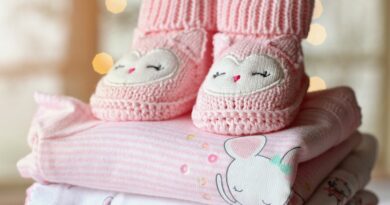Empowerment and Elegance: The Evolution of Women’s Clothing
Empowerment and Elegance: The Evolution of women’s clothing
Throughout history, women’s clothing has served as a powerful tool for self-expression, and perhaps more importantly, for liberation and empowerment. From the corsets of the Victorian era to the pantsuits of the modern age, women’s attire has come a long way, reflecting the changing roles and aspirations of women.
In the past, women’s clothing was often designed with excessive layers and restrictive forms. These garments were not only cumbersome but also symbolized the limitations imposed on women’s physical movement and social status. However, as times changed and women carved their path towards equality, so did their clothing choices.
One significant turning point in the evolution of women’s clothing was the rise of the suffragette movement in the late 19th and early 20th centuries. The suffragettes fought tirelessly for women’s rights, including the right to vote. They sought to challenge the societal norms that deemed women inferior and subservient. So naturally, they needed clothing that encapsulated their spirit of rebellion and determination.
The suffragettes, in a bid to break free from the confines of restrictive corsets and long flowing gowns, embraced a more practical and functional style. They opted for looser-fitting, knee-length skirts and tailored jackets, often in bold colors like purple, symbolizing their cause. This shift in fashion not only marked a transition towards a more practical style for everyday wear but also represented a tangible sign of women’s liberation.
As the 20th century unfolded, women began to play larger roles in society, both on the battlefield during World War I and in the workforce during World War II. These experiences led to yet another revolution in women’s clothing, reflecting their increasing independence and agency.
During World War I, women took on jobs traditionally filled by men while they were away at war. This necessitated the creation of practical and comfortable clothing that could accommodate their newfound responsibilities. Women began to wear trousers, initially reserved as functional wear for factories and farms. This adaptation allowed women more freedom of movement and paved the way for future leaps in feminine fashion.
In the post-war era, the iconic Chanel suit made its debut, revolutionizing women’s fashion once again. Coco Chanel, a trailblazing fashion designer, introduced tailored, boxy jackets paired with simple skirts, accentuating women’s natural figures rather than constricting them. This ensemble became an instant symbol of sophistication, confidence, and modernity. Chanel believed that clothing should empower women and give them the freedom to live their lives boldly and unapologetically.
Fast forward to the present day, and we witness a diverse range of clothing choices available to women, each reflecting their individual style and personality. Today, fashion serves as a powerful means of self-expression, and women’s clothing has become a dynamic and inclusive space, encouraging diversity and celebrating body positivity.
From feminine dresses to tailored suits, women can choose what makes them feel powerful, elegant, and confident. The modern casual wear movement has also given rise to athleisure and comfortable yet stylish clothing that allows women to conquer the world while still feeling comfortable in their own skin.
Indeed, the evolution of women’s clothing is a testament to the progress made towards gender equality. With each change in fashion, women have reclaimed their bodies, their voices, and their place in society. The choices they make when it comes to clothing reflect their desire to be seen, heard, and valued as equals.
In conclusion, empowerment and elegance have always interwoven the evolution of women’s clothing. From the suffragette movement to the present day, fashion has been instrumental in shaping and reflecting women’s liberation. It is a constant reminder that women have the power to determine their own identity and shape their destinies. As women continue to break barriers and redefine societal norms, their clothing choices will undoubtedly play a crucial role in further empowering and celebrating their endless potential.








